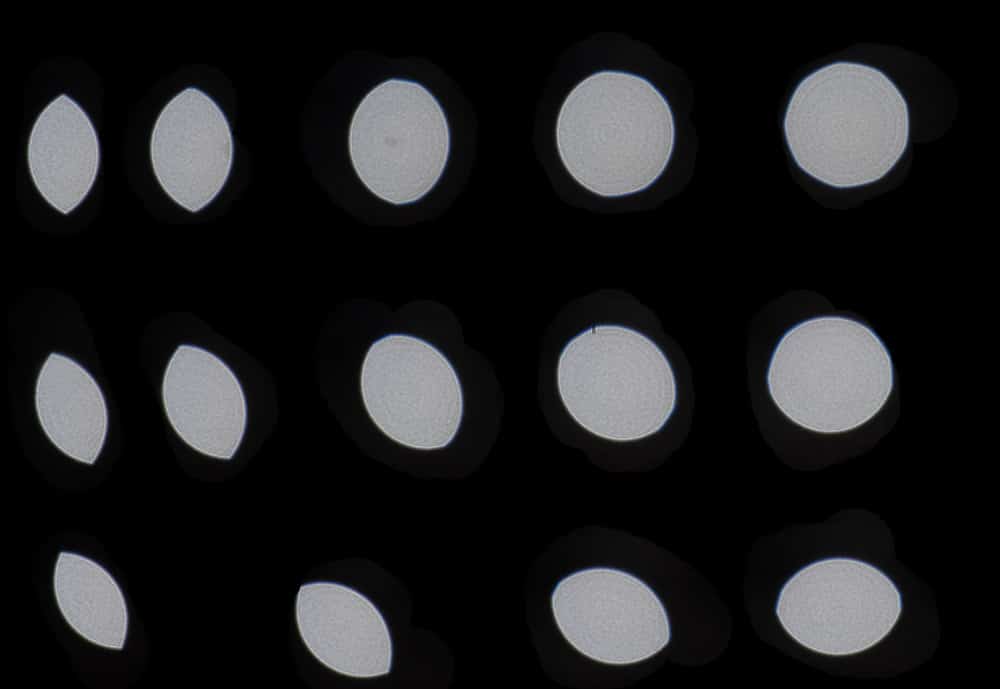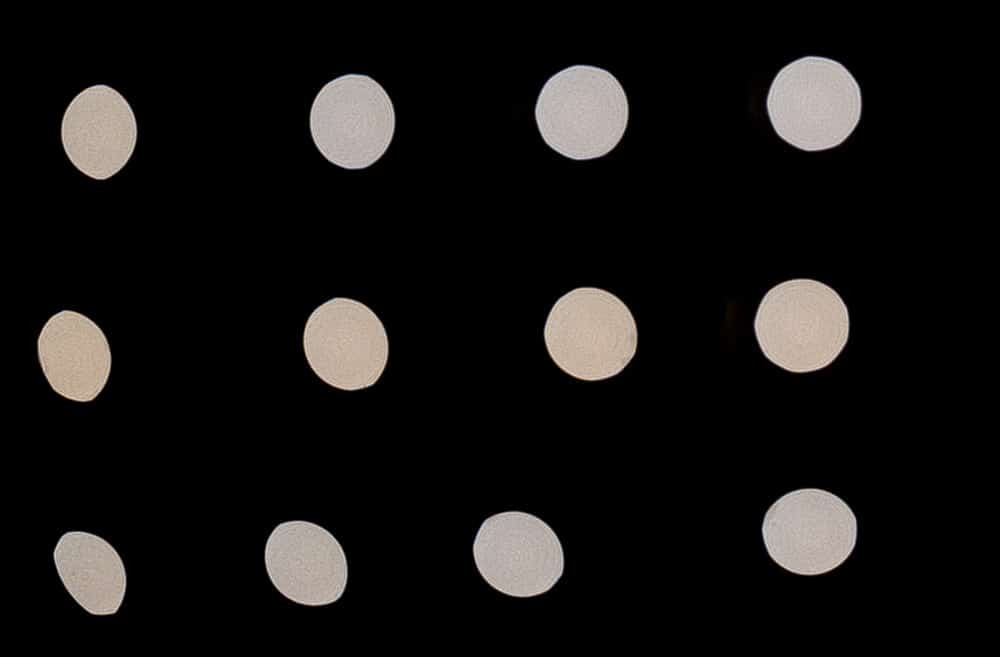This is the eighth in a series of posts about the Nikon 70-200 mm f/2.8 S lens for Nikon Z cameras. The series starts here.
There are two pieces to bokeh. The first is what things look like when they are well out of focus (OOF), and the second is how the transition from OOF to in-focus happens. The second is complicated, but the first is very simple. What you see when part of the image is well OOF is each point in the image times the OOF point spread function (PSF, in this case, aka bokeh balls). So you can understand what the bokeh in the OOF regions is gonna look like by looking at the OOF PSF across the frame. After you’ve looked at a few of these images that I’m going to show you here, you can see how the deep-OOF bokeh of just about any lens is going to look like with just about any scene.
The technique that I used to obtain the images below is explained here. I made a change for this set of images, which I think is going to be an improvement. I used an Astrozap artificial star for my light source instead of the LED flashlight. The artificial star is a much better approximation to an ideal point source, but it is rather dim. I moved the camera around and captured the PSFs in one quadrant, then mirrored and assembled them in Photoshop. I used a Z7 for the captures.
I’ll just show you the lower left quadrant, since the PSFs are rotationally symmetric. At 200 mm:
Except for the cat’s eyes, the PSFs look quite good here. But there is quite a bit of occlusion.
At 70 mm:
I apologize for the color casts. I neglected to white balance this set, and it has the Lr default of “as shot”. These look pretty good except for the cat’s eyes, too. There is an unusual occlusion in the corner.
For a look at what a lens with exemplary bokeh looks like, see the results for the Fuji 110/2 here.


Leave a Reply